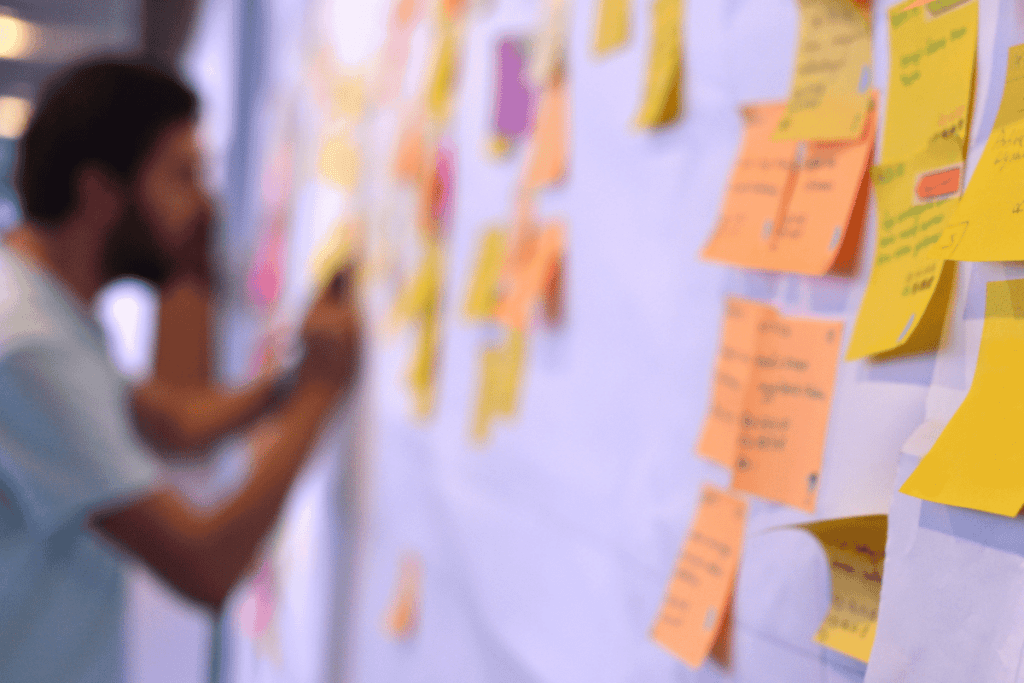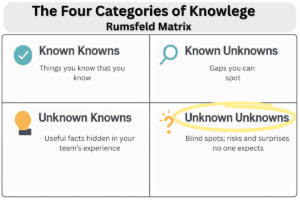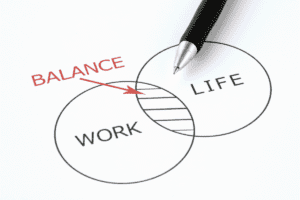In the dynamic world of Agile development, sprint retrospectives play a crucial role in driving continuous improvement. But exactly what is a sprint retrospective and how does it contribute to the success of Agile methodologies? Let’s explore the meaning and significance of this vital component.
Key Takeaways:
- A sprint retrospective is a dedicated meeting held at the end of a sprint in Agile development.
- It allows teams to reflect on their performance, identify areas for improvement, and formulate action plans.
- Retrospectives foster a culture of continuous improvement and open communication among team members.
- The meeting agenda typically includes discussing what went well, what could have gone better, and defining action items.
- Retrospectives are an essential practice in Agile methodologies to drive learning, collaboration, and growth.
The Essence of Agile Retrospectives
Agile retrospectives are a fundamental aspect of Agile methodologies, playing a crucial role in driving continuous improvement. These retrospectives provide dedicated time for teams to reflect on their experiences, identify areas for enhancement, and make valuable adjustments to optimize their performance.
One of the key benefits of agile retrospectives is their ability to promote transparency, collaboration, and teamwork. By creating a safe environment, team members can freely share their ideas, concerns, and feedback, fostering a culture of open communication.
During retrospectives, teams reflect on both their successes and failures, capturing valuable lessons that can be applied to future sprints. This culture of learning and growth is a cornerstone of Agile development, enabling teams to continuously improve their processes and outcomes.
By embracing agile retrospectives, teams can unlock their full potential and achieve higher levels of productivity and collaboration. It is through these reflective practices that organizations can truly harness the power of continuous improvement in the Agile development process.
Benefits of Agile Retrospectives:
- Promotes transparency and collaboration
- Fosters a culture of learning and growth
- Enables teams to identify areas for improvement
- Allows for valuable adjustments to optimize performance
Key Points:
-Agile retrospectives are what make Agile methods better all the time.
-They make it safe for teams to think about what happened and make changes that will help.
-These retrospectives encourage openness, working together, and teamwork.
-Teams learn important lessons for future sprints by thinking about what went well and what didn’t.
How to Conduct a Sprint Retrospective

In Agile methodology, a sprint retrospective is a crucial part of the development process. It allows the team to reflect on their performance, identify areas for improvement, and set the stage for future success. To conduct an effective sprint retrospective, it is essential to involve key stakeholders such as the Scrum Master and Product Owner.
The Scrum Master plays a vital role in facilitating the retrospective meeting. They create a safe and supportive environment where team members can openly share their thoughts and ideas. By encouraging open discussions, the Scrum Master fosters collaboration and helps the team identify valuable insights for improvement.
Involving the Product Owner in the retrospective is equally important. Their input provides a unique perspective on how the sprint’s outcome affected the product value and stakeholder expectations. This insight helps the team align their efforts with the overall objectives and prioritize improvement opportunities.
To ensure a productive sprint retrospective, the activities below should be followed.
Activities For Sprint Retrospective
- Preparing for the meeting: Set a clear agenda, gather necessary materials, and notify participants in advance.
- Setting the stage: Begin the retrospective by establishing the purpose and objectives, emphasizing the importance of open communication and collaboration.
- Gathering data and reflections: Encourage team members to share their feedback, experiences, and observations from the sprint.
- Asking relevant questions: Use sprint retrospective questions to guide the discussion and uncover insights. Examples of common questions include:
- What went well during the sprint?
- What could have gone better?
- What obstacles did the team face? How were they overcome?
- Are there any recurring issues or challenges?
- Identifying themes and key discussion points: Analyze the gathered data and reflections to identify common themes and areas for improvement.
- Discussing improvement opportunities: Engage the team in a constructive and focused discussion to brainstorm potential solutions and process enhancements.
- Defining action items and next steps: Based on the discussion, define actionable steps with clear objectives, ownership, and a realistic timeline.
- Reflecting on the retrospective process: Allow time for the team to reflect on the retrospective itself, sharing their thoughts on what worked well and what could be improved for future retrospectives.
- Following up and tracking progress: The Scrum Master should ensure that action items are followed up upon and progress is tracked, creating accountability and driving continuous improvement.
Remember, the focus of the sprint retrospective should be on process improvement rather than individual performance. By implementing the suggested actions, teams can enhance their Agile practices and deliver higher-quality products in subsequent sprints.
Example Sprint Retrospective Questions:
1. What obstacles or challenges did you encounter during the sprint?
2. What actions or decisions positively impacted the sprint’s success?
3. Were there any communication issues? If so, how can we improve communication going forward?
4. Did the team face any technical difficulties? How can we address them?
5. Did the sprint meet the stakeholder’s expectations? If not, what can we do differently?
| Sprint Retrospective Activities | Benefits |
|---|---|
| Preparing for the meeting | Ensures a well-organized and efficient retrospective |
| Gathering data and reflections | Provides valuable insights into team dynamics and sprint outcomes |
| Asking relevant questions | Facilitates meaningful discussions and uncovers improvement opportunities |
| Identifying themes and key discussion points | Allows the team to focus on the most critical areas for improvement |
| Discussing improvement opportunities | Promotes collaboration and generates innovative ideas for process enhancement |
| Defining action items and next steps | Creates a clear plan for implementing improvements |
| Reflecting on the retrospective process | Enables continuous improvement of the retrospective itself |
| Following up and tracking progress | Ensures accountability and drives continuous improvement |
Benefits of Sprint Retrospectives
Sprint retrospectives offer several benefits to Agile development teams. By reflecting on their performance and processes, teams can foster a culture of continuous improvement, leading to enhanced productivity and collaboration. Here are some key benefits of sprint retrospectives:
Fostering Continuous Improvement
Retrospectives provide an opportunity for teams to identify areas for enhancement and make targeted improvements. By reflecting on what worked well and what could be improved, teams can continuously refine their processes, resulting in more efficient and effective sprint cycles.
Empowering Team Members
Retrospectives empower team members to share their opinions, ideas, and concerns in a supportive environment. This fosters a sense of ownership and engagement, as team members have a voice in shaping the team’s future. When individuals feel valued and heard, they are more motivated and committed to the team’s success.
Facilitating Learning and Knowledge Sharing
Retrospectives provide a platform for teams to reflect on both successes and failures. By capturing valuable lessons learned, teams can translate their experiences into actionable insights for future sprints. This promotes learning and knowledge sharing within the team, enabling individuals to grow and improve collectively.
Promoting Transparency and Alignment
Retrospectives promote transparency by encouraging team members to openly discuss their challenges and achievements. Through shared perspectives, team members gain insights into each other’s experiences and can collectively address issues that may hinder collaboration. This alignment helps build trust and strengthens the team’s ability to work towards shared goals.
Overall, sprint retrospectives play a crucial role in Agile development by enabling teams to reflect, improve, and grow. By leveraging the benefits of retrospectives, teams can continuously enhance their processes, empower team members, foster learning, and drive impactful outcomes.
Best Practices for Sprint Retrospectives
When conducting a sprint retrospective, it’s crucial to follow best practices that enable productive discussions and drive meaningful improvements. By implementing the following guidelines, teams can create a safe environment for open communication, focus on process improvement, and ensure that action is taken and followed up on.
- Create a safe environment: Foster a culture of trust and psychological safety, where team members feel comfortable sharing their thoughts and ideas without fear of judgment or reprisal. This encourages open and honest discussions during the retrospective, leading to valuable insights and feedback.
- Provide specific feedback: When discussing what went well and what could have gone better, encourage team members to be specific. This allows for a deeper understanding of the root causes of any problems or successes, enabling the team to propose targeted improvements.
- Focus on process improvement: Instead of fixating on individual performance, direct the retrospective’s focus towards process improvement. This shift in mindset encourages collaboration and collective responsibility, as the team works together to identify and implement changes that enhance their overall effectiveness and efficiency.
- Take action: Avoid treating the retrospective as a mere discussion forum. It’s essential to identify actionable items that address the identified improvement opportunities. Each action item should have clear objectives, a designated owner, and a realistic timeline for completion.
- Follow up on action items: Assign the Scrum Master or another accountable team member to follow up on the action items. Regularly review the progress of each item to ensure that the agreed-upon changes are being implemented and that the team continues to move towards process improvement.
By adhering to these best practices, teams can maximize the value derived from sprint retrospectives, driving continuous improvement and fostering a culture of learning and growth within Agile development.
Example Table for Tracking Action Items
| Action Item | Objective | Owner | Timeline | Status |
|---|---|---|---|---|
| Incorporate more frequent testing during the sprint | Improve product quality and identify issues earlier | Mark Johnson | Next sprint | In progress |
| Implement peer code reviews | Enhance code quality and promote knowledge sharing | Emily Thompson | Current sprint | Complete |
| Enhance communication with stakeholders | Ensure alignment of expectations and gather timely feedback | Sara Williams | Ongoing | Not started |
Tools and Templates for Sprint Retrospectives
When it comes to conducting effective sprint retrospectives, having the right tools and templates can make all the difference. These resources can help teams capture ideas, facilitate collaboration, and ensure a structured approach to the retrospective meeting. Here are some key tools and templates that you can incorporate into your sprint retrospectives:
Sticky Notes
Sticky notes are a simple yet powerful tool for capturing thoughts, ideas, and feedback during the retrospective. They allow team members to jot down their observations and insights, making it easy to organize and categorize the information. With sticky notes, team members can contribute their thoughts in a visually engaging and interactive way.
Whiteboard
A whiteboard is an excellent tool for brainstorming and capturing visual representations of ideas during the retrospective. It provides a collaborative space where team members can draw diagrams, write down concepts, or create frameworks to facilitate discussions. The whiteboard encourages creativity and helps teams visualize their insights, making it easier to analyze and prioritize improvement opportunities.
Retrospective Templates
Retrospective templates offer a structured framework for the meeting, ensuring that teams stay on track and maximize the value of their retrospectives. These templates typically consist of guiding questions and prompts that help facilitate meaningful discussions. They provide a roadmap for the retrospective process, ensuring that important topics are covered and actionable insights are generated.
By leveraging tools such as sticky notes, whiteboards, and retrospective templates, teams can enhance their sprint retrospectives and drive meaningful change.
| Tool/Template | Description |
|---|---|
| Sticky Notes | A simple but effective way to capture thoughts and ideas during the retrospective. Encourages active participation and collaboration. |
| Whiteboard | Provides a visual workspace for brainstorming and capturing visual representations of ideas. Enables teams to visualize insights and facilitate discussions. |
| Retrospective Templates | Structured frameworks that guide the retrospective process. Include guiding questions and prompts to facilitate focused and fruitful discussions. |
These tools and templates can be used individually or in combination, depending on the needs and preferences of your team. Experiment with different approaches to find what works best for you. Remember, the goal is to create an environment that encourages open communication, collaboration, and continuous improvement.
Having the right tools and templates can make your sprint retrospectives more engaging and productive. They help teams capture valuable insights, stimulate creativity, and drive effective decision-making. Whether you use sticky notes, whiteboards, or retrospective templates, these resources can contribute to a successful retrospective meeting and empower your team to achieve continuous improvement.
The Scrum Framework and Sprint Retrospectives

Sprint retrospectives play a crucial role within the Scrum framework, a widely adopted Agile methodology. This framework consists of artifacts, roles, and ceremonies that work together to enable effective Agile development.
Artifacts in Scrum include the product backlog and sprint backlog, which represent the work to be completed in the project. These artifacts provide visibility and structure to the development process, allowing the team to focus on delivering value in each sprint.
The roles in Scrum are well-defined, with each having specific responsibilities. The product owner represents the stakeholders’ interests, prioritizing work and ensuring the product’s success. The Scrum Master serves as a facilitator, guiding the team and ensuring adherence to Scrum principles. Finally, the development team is responsible for delivering quality increments of work.
Within the Scrum framework, various ceremonies take place throughout the sprint. These ceremonies include:
- Sprint Planning: Involves collaborative planning to determine the work to be completed in the upcoming sprint.
- Daily Stand-up Meetings: Short, daily meetings where the team synchronizes activities and identifies any impediments.
- Sprint Review: A meeting where the team showcases the completed work to stakeholders, gathering feedback and adapting plans as necessary.
- Sprint Retrospective: The focus of this article, where the team reflects on their performance, learns from their experiences, and identifies areas for improvement.
Stakeholder involvement is crucial in the Scrum framework as their input helps shape product development. Throughout the process, it is essential to gather feedback, address concerns, and align the team’s work with stakeholder expectations.
| Ceremony | Description |
|---|---|
| Sprint Planning | Collaborative planning to determine sprint goals and work. |
| Daily Stand-up Meetings | Short, daily meetings for synchronization and identifying impediments. |
| Sprint Review | Meeting to showcase completed work and gather stakeholder feedback. |
| Sprint Retrospective | Reflect on performance, learn from experiences, and identify areas for improvement. |
The Importance of Retrospectives in Agile Development
Retrospectives are a fundamental aspect of Agile development, playing a crucial role in embracing the iterative nature of the methodology. They provide an invaluable opportunity for teams to reflect on their performance, learn from their experiences, and continuously improve their processes. Without retrospectives, teams run the risk of moving from one sprint to another without taking the time to analyze what worked well and what can be improved upon.
“Retrospectives offer teams a structured framework to evaluate their work, identify areas of improvement, and make the necessary adjustments to optimize their performance.”
By regularly conducting retrospectives, teams can foster a culture of continuous improvement. They provide a dedicated space for team members to openly discuss their achievements, challenges, and ideas. This fosters collaboration, transparency, and trust among team members.
Creating a Culture of Continuous Improvement
Retrospectives are essential in promoting a culture of continuous improvement within Agile teams. By reflecting on their processes, collaboration, and outcomes, teams can identify opportunities for growth and refine their approach. Through retrospectives, teams can:
- Identify bottlenecks and inefficiencies: Retrospectives allow teams to pinpoint areas where processes could be streamlined or improved to enhance productivity.
- Capture lessons learned: By reflecting on both successes and failures, teams can capture valuable lessons and apply them to future sprints, avoiding repeating past mistakes.
- Promote team empowerment: Retrospectives provide team members with a platform to voice their opinions and concerns, fostering a sense of ownership and engagement.
- Encourage learning and knowledge sharing: By sharing experiences and insights, team members can collectively learn, grow, and share best practices.
Ultimately, retrospectives ensure that Agile teams continuously evolve and adapt, enabling them to deliver higher-quality products and achieve greater customer satisfaction.
| Benefits of Retrospectives | Why They Matter |
|---|---|
| Promote continuous improvement | Identify areas for enhancement and refine processes |
| Foster transparency and collaboration | Build trust, align perspectives, and work towards shared goals |
| Capture valuable lessons | Avoid repeating mistakes and apply insights to future sprints |
The Power of Reflection for Continuous Improvement

Reflection is a powerful tool for continuous improvement in Agile development. By taking the time to reflect on past experiences, teams can identify their strengths and weaknesses, capture valuable lessons learned, and make data-driven decisions for the future.
One of the key components of the reflection process is the retrospective. This is a dedicated meeting where team members can provide feedback and openly discuss what went well, what could have been done better, and any challenges they faced.
“The retrospective process allows us to pause and reflect on our work. It’s an opportunity to celebrate our successes, acknowledge areas for growth, and generate insights that lead to continuous improvement.”
Through the retrospective process, teams gain a deeper understanding of their progress and can adapt their processes to foster continuous learning and improvement. By addressing any issues or bottlenecks, teams can enhance their productivity and collaboration, ensuring they are always striving for excellence.
It’s important to note that the retrospective
process itself is not set in stone. Teams should regularly reflect on how they conduct their retrospectives and make adjustments as required. This allows them to refine and optimize their approach, ensuring that retrospectives remain effective and valuable.
Benefits of Reflection for Continuous Improvement
The benefits of reflection and continuous improvement go beyond just the individual team members. When teams actively engage in the retrospective process, the entire organization can benefit. Here are some of the key benefits:
- Improved problem-solving: Reflection helps identify underlying issues and enables teams to find effective solutions.
- Enhanced collaboration: By reflecting on their processes and communication, teams can improve collaboration and teamwork.
- Increased productivity: Addressing areas of improvement leads to optimized processes and increased productivity.
- Employee engagement: The retrospective process empowers team members to provide feedback, fostering a sense of ownership and engagement.
- Culture of learning: Regular reflection creates a culture where learning and growth are prioritized.
By leveraging the power of reflection, teams can continuously strive for improvement and achieve higher levels of success in Agile development.
Case Study: Implementing Reflection for Continuous Improvement
| Company | Challenge | Solution | Outcome |
|---|---|---|---|
| XYZ Tech | Low team morale and inconsistent performance | Implemented regular retrospectives to identify areas for improvement and foster open communication | Team morale improved, collaboration increased, and overall performance enhanced |
| ABC Solutions | Poor customer satisfaction and frequent delays | Conducted in-depth retrospectives to identify process bottlenecks and implement corrective actions | Customer satisfaction scores improved, and project delivery became more reliable |
In the case study of XYZ Tech, implementing regular retrospectives allowed the team to identify the root causes of low morale and inconsistent performance. By addressing these issues and fostering open communication, the team experienced significant improvements in collaboration and overall performance.
Similarly, at ABC Solutions, conducting in-depth retrospectives helped identify process bottlenecks that were causing poor customer satisfaction and frequent delays. By implementing corrective actions based on the retrospective findings, the company was able to improve customer satisfaction scores and deliver projects more reliably.
These examples highlight the real-world impact of reflection and continuous improvement. By embracing the power of retrospectives and actively seeking opportunities for growth, teams can drive positive change and achieve their goals in Agile development.
FAQ
What is a sprint retrospective?
A sprint retrospective is a dedicated meeting held at the end of a sprint in Agile development. It allows the team to reflect on their performance, identify areas for improvement, and formulate action plans for future iterations.
What is an agile retrospective?
An agile retrospective is a meeting where the team reflects on their processes, collaboration, and outcomes to identify areas for improvement. It is a key practice in Agile methodologies to drive continuous improvement.
What happens in a retrospective meeting?
In a retrospective meeting, the team discusses what went well during the previous sprint, what could have gone better, conducts a root cause analysis of any problems, identifies action items, and summarizes key takeaways. It is an opportunity for open and honest communication among team members.
How to conduct a sprint retrospective?
Conducting a sprint retrospective involves activities such as preparing for the meeting, setting the stage, gathering data and reflections, asking relevant questions, identifying themes and key discussion points, discussing improvement opportunities, defining action items and next steps, reflecting on the retrospective process, and following up and tracking progress.
What are the benefits of sprint retrospectives?
Sprint retrospectives foster a culture of continuous improvement, empower team members to share their opinions and ideas, facilitate learning and knowledge sharing, promote transparency and alignment, and help capture valuable lessons for future sprints.
What are the best practices for sprint retrospectives?
Best practices for sprint retrospectives include creating a safe environment for open discussions, being specific when discussing what went well and what could have gone better, focusing on process improvement rather than individual performance, taking action and defining action items with clear objectives and ownership, and following up on the action items.
What tools and templates can be used for sprint retrospectives?
Tools such as sticky notes and whiteboards can be used to capture thoughts and ideas during the retrospective. Retrospective templates are available online and provide a structured framework for the meeting, helping teams stay on track and ensure they get the most out of their retrospectives.
How do sprint retrospectives fit into the Scrum framework?
Sprint retrospectives are one of the ceremonies in the Scrum framework, which also includes sprint planning, daily stand-up meetings, and the sprint review. Retrospectives play a vital role in Agile development by embracing the iterative nature of the methodology.
Why are retrospectives important in Agile development?
Retrospectives are important in Agile development because they ensure that teams reflect on their performance, learn from their experiences, and continuously improve their processes. They promote a culture of continuous learning and adaptation.
What is the power of reflection for continuous improvement?
Reflection is a powerful tool for continuous improvement as it allows teams to identify strengths and weaknesses, capture lessons learned, and make data-driven decisions for the future. Feedback from retrospectives helps teams understand their progress and create a culture of continuous learning and improvement.
Conclusion
In conclusion, sprint retrospectives are a critical practice in Agile development that enable teams to reflect on their performance and identify areas for improvement. By embracing the iterative nature of Agile, teams can achieve continuous improvement, leading to enhanced productivity and collaboration.
The structured process of sprint retrospectives, combined with the right mindset and tools, can drive positive change and empower teams to reach new levels of success in their Agile journey. Through open and honest communication, teams can foster a culture of continuous learning and improvement.
Overall, sprint retrospectives provide a valuable opportunity for teams to reflect, learn, and adapt their processes for future iterations. By consistently conducting retrospectives, teams can optimize their performance, enhance collaboration, and deliver greater value to stakeholders. Embracing the spirit of continuous improvement, sprint retrospectives are an essential element of successful Agile development.
If you liked this article, remember to subscribe to MiamiCloud.com. Connect. Learn. Innovate.






